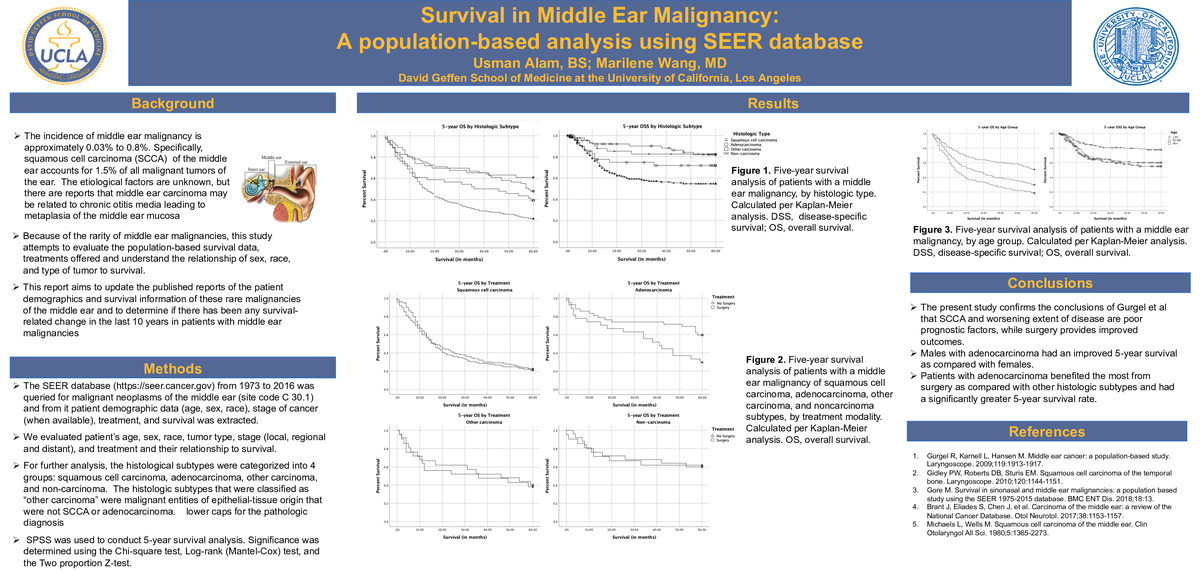-
Author
Usman Alam -
Co-author
Marilene Wang
-
Title
Survival in middle ear malignancy: A population-based analysis using SEER database
-
Abstract
INTRODUCTION: Primary malignancy of the middle ear is rare and consists of a variety of histologic subtypes. The purpose of this study was to investigate the clinical features and survival outcomes of patients with middle ear malignancies at a population level.
METHODS: Records of patients diagnosed with a middle ear malignancy from 1973 to 2016 were extracted using SEER*Stat from the Surveillance, Epidemiology, and End Results (SEER) database. SPSS was used to conduct 5-year survival analysis. Significance was determined using the Chi-square test, Log-rank (Mantel-Cox) test, and the Wilcoxon signed rank test.
RESULTS: A total of 431 patients met our database search criteria. Patients with squamous cell carcinoma (SCCA) were significantly older than those with adenocarcinoma (P<0.0001). Black patients comprised a greater proportion of the adenocarcinoma group (17.8%) than of the SCCA group (5.6%) (P=0.0009). Five
CONCLUSION: Prognosis and treatment outcomes for primary middle ear malignancies depend on histologic subtype and age at diagnosis. The non-carcinoma and adenocarcinoma subtypes carry the best prognoses. Patients with adenocarcinoma were most likely to benefit from surgery.
-
College
AAC
-
Zoom
-
PDF

